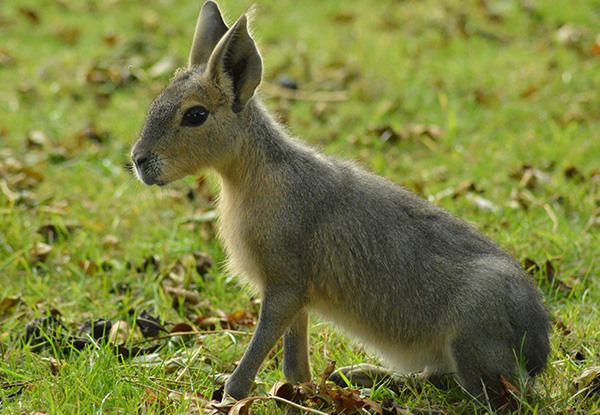Patagonian Mara
Patagonian maras can hop like rabbits, gallop like horses, or pronk like llamas, but they are rodents.
Day of Creation: six
Biblical Kind: cavy (includes guinea pigs, cavies, maras, and capybaras)
Status: least concern
Length: 27–30 inches (68.6–76.2 centimeters)
Weight: 18–35 pounds (8.2–15.9 kilograms)
Habitat: arid grasslands and scrublands of central and southern Argentina
Lifespan: 14 years
Diet: grasses, cacti, flowers, fruits, and seeds
Family Life: live in mated pairs that form large settlements during breeding season
Reproduction: 1–3 pups are born after 100-day gestations
Fun Facts
Patagonian maras are rodents, an order of animals characterized by large incisors that never stop growing. They have to constantly chew to keep their teeth worn down.
Fossils reveal that maras have lived in South America since before the ice age.
Patagonian maras often mate for life. Males mark their females and will aggressively defend them from predators and rivals.
Patagonian mara mated pairs typically live alone but will gather in shared dens called settlements of up to 35 pairs during the breeding season for safety while raising their pups. Females primarily raise the pups, while males watch for predators and defend their dens.
These rodents are quite noisy. They will emit wheets when they want contact. When threatened, they will grunt and chatter their teeth. When grooming, they will often chitter at each other. They also communicate through scent marking.
